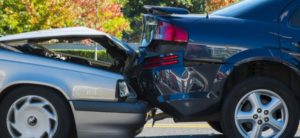DO YOU HAVE ENOUGH CAR INSURANCE?
Adequate car insurance coverage is critical to protecting drivers and their families from financial catastrophes. Car insurance protects drivers from the financial exposure that results if the driver is involved in an accident. While comprehensive and collision cover the insurer’s assets, liability insurance protects people from losing everything if they are sued for damages. However, car insurance is not carte blanche coverage for any financial exposure – it is limited by the terms of the policy. Therefore, it’s crucial that drivers have a policy that adequately covers their risks.
Typical Car Insurance Terms
Liability insurance provides coverage for injuries and property damage the at-fault driver causes to others. Bodily injury liability pays for lost wages and medical expenses for individuals injured in car crashes caused by the driver. Similarly, property damage liability provides coverage for damage caused to other vehicles, valuables, and property damaged in the accident.
Drivers in Nevada can also purchase uninsured/underinsured motorist coverage. Uninsured/underinsured coverage is activated when another driver causes the accident but does not have adequate insurance to pay for the injuries suffered by the victimized driver.
Issues with Liability Limits
Liability limits refer to the total amount that an insurance company will pay out for each person and each incident. In general, liability insurance is:
- $100,000 for injuries per person;
- $300,000 per accident for injuries; and
- $50,000 for property damage for each accident.
For a free legal consultation, call (725) 900-9000
If an individual suffers $150,000 in medical costs and lost wages, the driver’s insurance will pay for $100,000 of the costs. The driver is liable for the remaining $50,000. Similarly, if four people are injured in an accident, and each suffers $100,000 in harm for a total of $400,000; the driver is liable for the remaining $100,000. When coverage is inadequate, the victim may go after the driver’s assets, such as savings accounts and attaching liens to real property.
When to increase liability limits
Drivers should purchase increased liability limits when they have assets to protect. An individual is “judgment proof” when they have no assets that are worth pursuing. Therefore, drivers who have limited assets may not need increased liability coverage because the victim is unlikely to sue the driver since the victim is unlikely to be able to recover any funds.
However, if the driver has significant assets, such as retirement savings or real property, then the driver may want to consider purchasing increased liability coverage.
No obligation consultations are always free.
Let Us Help You! Call Now: (725) 900-9000



